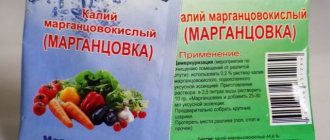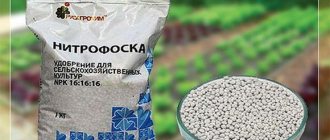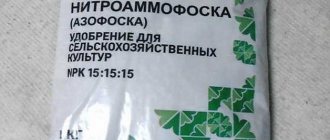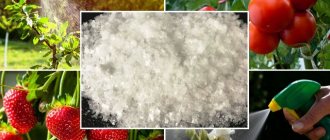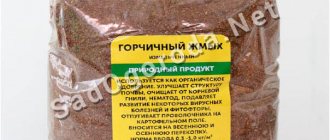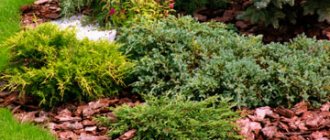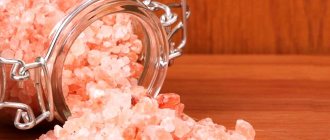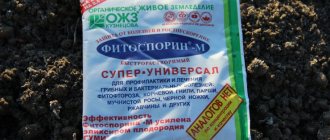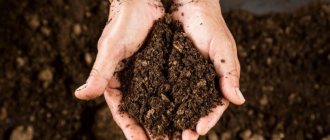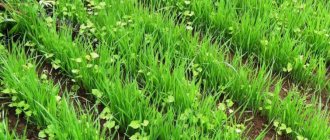Fitosporin and its use in autumn. Fungicide "Fitosporin - M".
Memo.
A new generation microbiological preparation, effective against fungal and bacterial diseases on any crops - house flowers, rooted cuttings, in the garden on fruit trees and shrubs, on all vegetable crops. Bacterial fungicides and biological pesticides. The speed of impact is from the moment of treatment.
Available in:
* powder (with a titer of at least 2 billion spores and living cells and spores/g) in bags of 10 and 30 g, 1 teaspoon of powder - 3, 3, 5 g.
* pastes (with a titer of at least 100 million live cells and spores/g), in a package there is a flat cake weighing 200 g.
* liquid (aqueous suspension with a titer of at least 1 billion live cells and spores/ml.
Purpose:
"Fitosporin - M" refers to systemic drugs that can spread throughout the vascular system of plants. Its basis is a spore culture, whose metabolic products (produces fungicidal oligopeptides) suppress the proliferation of pathogens of fungal and bacterial plant diseases:
* Alternaria, * American powdery mildew, * bacteriosis, * bacterial spot (black rot), * bacterial canker, * white spot (septoria), * leaf rust, * root rot, * monolithic burn, * powdery mildew, * scab, * peronosporosis (downy mildew), * penicillium rot, * rust, * rhizoctonia, * snow mold, * dry and wet rot of tubers, * tracheomycosis (tracheomycosis wilt), * late blight, * phomosis, * fusarium rot, * cercospora, etc.
And also rot during storage of tubers and bulbs: white rot, gray rot, black dry rot, fruit rot, fusarium dry rot, etc. Group in VK life of flowers and plants. “Fitosporin” is not a panacea for all diseases of garden crops and indoor (tropical) flowers; its effectiveness may vary in different plants and, depending on the disease, ranges from 65 to 95%. These are very good indicators, considering that the drug is low-toxic and can be safely used even in an apartment.
The great advantage of this drug is the preservation of living cultures in a wide temperature range from -50 to 40°C. the biological product retains its properties even after freezing and thawing.
Under unfavorable conditions for it, the bacterial culture of Bacillus Subtilis enters a spore state and its vital activity is suspended, but as soon as conditions are restored (for example, after thawing), the bacteria enter an active state, inhibiting pathogenic fungi and bacteria.
In addition, the biofungicide "Fitosporin - M" can be enriched with humic bioactive fertilizer "gumi" (this should be indicated on the packaging.
Humic acids are necessary only for the roots, so they are not added for spraying vegetables and fruits, including before storage.
But the main advantage is the ability to apply at any time at any stage of plant development - during the growing season, flowering, fruiting. The manufacturer guarantees the safety of the crop even on the day of treatment with Fitosporin.
Directions for use:
"Fitosporin" is used for treating seeds, cuttings, preparing land before sowing and planting, for spraying vegetative and fruit-bearing plants.
Treatments can be carried out in any weather, but after rains the protective film formed from spraying is partially washed off, so repeated spraying is necessary.
Frequency of treatment: once every 7-14 days, depending on the weather. During periods of long, prolonged rains, spray immediately after rain.
If “Fitosporin” is used for irrigation, then the frequency of treatments is 1 month for vegetables and 2 times a month for fruit trees and shrubs. Houseplants once a month.
"Fitosporin" powder.
Dilute 1-2 hours before treatment.
* for soaking tubers and bulbs: 10 g. Powder per 500 ml of water, sprayed with this solution, is enough to process 20 kg of preplanting material.
* for soaking seeds for 2 hours before planting: 1.5 g. Powder (0.5 teaspoons) per 100 ml of water.
* for soaking the root system for the prevention and treatment of rot, before planting seedlings: 10 g. “Fitosporina” in 5 liters of water, soak for 1-2 hours. VK group life of flowers and plants. After planting or replanting, you can water the soil with this solution (like regular watering.
* for the prevention and treatment of fungal and bacterial diseases, spraying on the leaf:
Potatoes - 10 gr. Powder per 5 liters of water, again after 10-14 days, cabbage - 6 grams. For 10 liters of water, again after 2-3 weeks, tomatoes, peppers, eggplants - 5 g per 10 liters of water, again after 10-14 days, cucumbers - 10 g. For 5 liters of water, spray three times with an interval of 10-15 days.
* for spraying indoor and garden flowers: as a preventative measure 1.5 g. (1/2 teaspoon) per 2 liters of water; for the treatment of diseased flowers 1.5 g. For 1 liter of water.
* for preparing greenhouses and soil before planting vegetables and berries: 5 gr. Spray the surfaces of greenhouses and greenhouses with powder per 10 liters of water, water the soil a week before planting.
"Fitosporin" paste.
Fitosporin-M paste contains gumi, so you don’t need to add anything to it. VK group life of flowers and plants. Preparation of solution concentrate: 100 g. Dilute Fitosporina-m pastes into 200 ml. Water, or in any other quantity in a ratio of 1: 2. the resulting concentrated solution can be stored, and before use, diluted again with water at the rate of:
* tubers and bulbs before storage or planting, spraying at the rate of 3 tbsp. Spoons of solution concentrate per 1 glass of water.
* for soaking seeds of vegetables, garden and indoor flowers - 2 drops of concentrated solution in half a glass of water, leave for 2 hours.
* for rooted cuttings: 4 drops of working solution per 1 glass of water (200 ml.
* leaf spraying of vegetables, berries, fruit trees and flowers for the prevention and treatment of various diseases - 3 teaspoons of concentrate per 10 liters of water or 4 drops of concentrate per 200 ml. Water, watering and spraying.
* indoor plants: 10 drops per 1 liter of water for spraying and 15 drops per 1 liter of water for watering the soil in pots.
"Fitosporin" liquid.
Liquid “Fitosporin” (in a ready-made solution) is intended, first of all, for spraying vegetative plants leaf by leaf (including indoor ones), as well as for spraying vegetables, fruits, berries, tubers before storing.
At the same time, the manufacturer offers the same solution in different versions: you can see a bottle with the inscription “Fitosporin - M Bioprotection for Flowers and Houseplants”, group in VK Life of Flowers and Plants. “Fitosporin - M Golden Autumn”, phytosporin - M storage” are identical solutions in terms of the number of beneficial bacteria and are used in the same way: at the rate of 10 drops per 1 glass of water (200 ml. You can root cuttings in the same solution, or soak seeds.
"Fitosporin - M" resuscitator.
Concentrate of Bacillus Subtilis bacterial spores, the drug contains amino acids, natural antibiotics, vitamins, enzymes that promote the dissolution of the cell walls of pathogenic fungi and bacteria. The drug helps restore plant growth due to disease damage, as well as from the effects of unfavorable factors such as waterlogging, sunburn, and frozen plants. Can be combined with growth stimulants.
Consumption rates:
* at the beginning of the disease, dilute the drug in a ratio of 1 part concentrate to 20 parts water, thoroughly spray the plants. Again after 10 days.
* in case of severe development of the disease, dilute 1 part of the concentrate with 2 parts of water. Again after 10 days.
Consumption of the prepared solution: 1 liter per 10 sq. m.
Compatibility of Fitosporin with other drugs.
The drug is compatible with many chemical pesticides: for example, with insecticides - Decis, Aktara, Fitoverm, etc. Fungicides - Strobi, Quadris, Tilt Premium, Fundazol, Vitivax 200; .
Fertilizers and growth regulators - “Zircon”, “ribav - extra”, “epin”, “amulet”, “plantafol”;.
Antibiotic drugs - “Fitolavin”.
It is important not to combine with solutions that have an alkaline reaction! It should be noted that some versions of “Fitosporin - M” contain “humi” (humic acids), for example, “Fitosporin - paste”. In this case, it is not advisable to combine them with growth stimulants.
In addition, it is special for specific vegetables, for example, “phytosporin - M cucumber” or “phytosporin - M tomatoes” - the difference between them is that they contain microelements (different in each) that are more necessary for a specific garden crop.
And therefore, it is advisable to use them on the specified crops, and if necessary, use the group in VK life of flowers and plants. “Fitosporin - M” is universal, and do not combine spraying with mineral fertilizers, so as not to cause an excess of certain minerals.
Toxicity.
Fitosporin has a hazard class of 4 for humans (can cause mild irritation of the mucous membrane upon contact with the drug or solution) and a hazard class of 3 for bees (the border protection zone for bees is 4-5 km. Not phytotoxic, harmless to beneficial insects.
Security measures.
Perform processing using gloves; avoid smoking, drinking, and eating while working. In case of contact with skin or mucous membranes, rinse with water; if it enters the digestive tract, drink 3-4 glasses of water, induce vomiting, and take several tablets of activated carbon.
Store the drug in a dry place, optimally from -20 to 30°C, separately from food and medicines, in places inaccessible to children and pets. Shelf life 4 years. Storing the working solution is permissible at moderate temperatures, in a place protected from the sun.
Compatibility of Fitosporin with other fertilizers
Fitosporin is compatible with almost all insecticides (Aktara, Decis, Fitoverm), fungicides (Fundazol, Quadris, Strobi, Vitivax 200). You can combine this remedy with growth regulators and fertilizers, such as Ribav-Extra, Amulet, Zircon, Plantafol, as well as with antibiotics - Fitolavin.
Do not combine phytosporin with alkaline solutions. It must be taken into account that some variants of Fitosporin-M contain humic acids; such products are not recommended to be combined with growth stimulants.
You may be interested in: Phosphorus fertilizers: main types, composition, application
There is Fitosporin intended for specific vegetables. “Fitosporin-M tomatoes”, “Fitosporin-M cucumber” contain microelements necessary for a specific crop. You cannot replace them on vegetables or spray them together with mineral fertilizers, otherwise this will lead to an excess of minerals.
Fitosporin for soil treatment in autumn. "Fitosporin-M": advantages of a biofungicide
Treating the soil with “Fitosporin” (in spring and autumn), spraying and watering street and indoor plants have a positive effect on their condition and productivity.
The biological fungicide "Fitosporin-M" performs several important functions:
- protects and treats several diseases at the same time (which sets it apart from a number of other biofungicides);
- has growth-regulating activity.
Among the main advantages of the drug are:
- high environmental friendliness (the product is safe for humans (hazard class 4) and for bees (hazard class 3). The waiting period is minimal (for example, using Fitosporin on strawberries allows you to eat the berries the very next day);
- high efficiency against pathogens (fungi and bacteria) inside plants, above-ground parts and in the root zone (from 76% to 96% success);
- the ability to reduce the toxicity of chemical fertilizers on plants;
- possibility of use throughout the entire vegetative period of plant development;
- the ability to increase crop yields from 15% to 25% (subject to proper treatment with the drug);
- good compatibility with other fungicides (such drugs as Fundazol, Vitivax 200, Decis, etc.).
"Fitosporin-M" does not cause resistance in plants and allows you to increase the shelf life of fruits and vegetables (two to three times).
An important factor is the affordable price.
Important! “Fitosporin-M” should absolutely not be used in conjunction with alkaline-based preparations (fertilizers, growth regulators, etc.).
Features of application
Soil treatment against late blight in the fall should be carried out according to the rules specified in the instructions for a particular drug. The use of each of them has its own specifics:
- The Ordana solution should be prepared immediately before use. To treat the soil, it is necessary to dilute 5 g of the drug per liter of water.
- “Acrobat MC”, “Ditan M 45”: to prepare the solution, take 20 g of the substance per liter of water.
- “Hom”: dosage – 40 g per 10 liters of liquid.
It will be easier for the gardener to follow the instructions exactly. It is very important to remember that you should not smoke, eat or drink while working with medications. It is unacceptable to prepare the solution in a kitchen container.
Fitosporin-M use of caution. Use of phytosporin
Fitosporin-M is a systemic drug that can spread throughout the vascular system of plants. Its basis is a spore culture, whose metabolic products (produces fungicidal oligopeptides) suppress the proliferation of pathogens of fungal and bacterial plant diseases:
- Alternaria blight,
- American powdery mildew,
- bacteriosis,
- bacterial spot (black rot),
- bacterial cancer
- white spot (septoria),
- brown rust,
- root rot,
- monolithic burn,
- powdery mildew,
- scab,
- peronosporosis (downy mildew),
- penicola rot,
- rust,
- rhizoctoniasis,
- snow mold,
- dry and wet rot of tubers,
- tracheomycosis (tracheomycosis wilt),
- late blight,
- fomoz,
- fusarium rot,
- cercospora, etc.
And also rot during storage of tubers and bulbs: white rot, gray rot, black dry rot, fruit rot, fusarium dry rot, etc. Fitosporin is not a panacea for all diseases of garden crops and indoor (tropical) flowers; its effectiveness may vary depending on different plants and depending on the disease ranges from 65 to 95%. These are very good indicators, considering that the drug is low-toxic and can be safely used even in an apartment.
The great advantage of this drug is the preservation of living cultures in a wide temperature range from -50 to +40°C. The biological product retains its properties even after freezing and thawing. Under unfavorable conditions for it, the bacterial culture of Bacillus subtilis enters a spore state and its vital activity is suspended, but as soon as conditions are restored (for example, after thawing), the bacteria enter an active state, inhibiting pathogenic fungi and bacteria. In addition, the biofungicide Fitosporin-M can be enriched with the humic bioactive fertilizer GUMI (this should be indicated on the packaging). Humic acids are needed only for the roots; there is no need to add humic acids for spraying vegetables and fruits, including before storage.
The main advantage of Fitosporin-M is the ability to use it at any time at any stage of plant development - during the growing season, flowering, fruiting. The manufacturer guarantees the safety of the crop even on the day of treatment with phytosporin. However, there is a significant drawback: Bacillus subtilis (any of its strains) die in bright sunlight. If you want to spray with phytosporin against diseases, do it only in cloudy weather, or at the end of the day, when it is getting dark. iplants.ru also reminds: do not forget to wash fruits and vegetables with hot water, and berries with cold running water and boiled water, before eating and preparing dishes.
If you need a fungicide to protect your garden, vegetable garden and house flowers from the group of biological products, pay attention to another drug in this group - Trichophyte.
Description of the drug
Fitosporin is a universal preparation of the group of systemic fungicides for freeing the soil from many types of bacteria that cause various diseases in plants. The versatility of the product is manifested in the fact that it is suitable for all types and types of cultivated plants. The lack of toxicity increases the attractiveness of Fitosporin in the eyes of gardeners.
Plants treated with Fitosporin do not harm human health, since there are no toxic substances in it. The fruits can be processed immediately before harvest.
The living bacterium Bacillus subtilis (bacillus hay) is the basis of this remedy for combating phytodiseases. Its spores are contained in the drug. The bacterium produces fungicidal oligopeptides that destroy various types of bacterial/fungal infection agents. As a result, with the help of Fitosporin you can successfully defeat:
- late blight;
- root rot;
- top rot;
- scab;
- powdery mildew;
- other types.
This biological product can be used for the treatment of plant diseases and their prevention at any vegetative stage of development of garden crops. After diluting the powder with water, the vital activity of Bacillus subtilis is activated, which destroys any pathogenic microorganisms.
Manufacturers offer two types of the drug - Fitosporin-M and Fitosporin-K. An analogue of this remedy is the drug PhytoDoctor and Trichodermin.
The drug does not lose its beneficial properties due to temperature changes or lack/excess of moisture. It is not affected by weather conditions or atmospheric changes. However, it is better to treat plants with Fitosporin solution in the evening or in cloudy weather, since with active solar radiation the effect of the drug is suspended. It is also not worth spraying in rainy weather, since streams of water will simply wash the solution off the leaves.
Advantages and disadvantages
Let's talk about the advantage of the drug over other fungicides, of which there are many on sale. Most of the agricultural products presented by manufacturers are poisonous, potentially dangerous to humans, poison the environment, and harm bees. The use of poisonous fungicides is associated with a number of adverse effects: bees, domestic animals, and fish in the nearest natural source may die. They also have a toxic effect on humans, so when working with pesticides you need to be fully protected with protective clothing.
Benefits of Fitosporin:
- non-toxic for humans, animals, insects;
- does not respond to weather conditions (except rain), temperature;
- can be used at any stage of the vegetative phase of plants.
The release form of the drug is liquid (suspension, nano-gel), solid (powder, paste). For ease of use, the product is packaged in small containers weighing up to 300 g; there are 10 g bags. Liquid Fitosporin is packaged in 10 liter canisters and small bottles.
Storage temperature of the drug Fitosporin: from -20 C to +30 C.
The powder is packaged in boxes, the shelf life reaches 4 years. To prepare a working solution of the powder, you need to dilute it with water. But the powder form has a drawback: it dissolves slowly in water. Sometimes the powder does not want to dissolve completely; a sediment remains at the bottom.
The paste dissolves much faster than the powder. There's no problem with her. The liquid substance is completely ready for processing plants, but it is used only when watering ornamental plants.
Fitosporin in autumn. Methods of application
"Fitosporin" is available in the form of powder, paste or liquid in bottles. One part of the paste is dissolved in two parts of non-chlorinated water. The resulting solution is then diluted with water for subsequent treatment of seeds, plants or soil. The liquid preparation, which comes in bottles, is diluted with water before use. For watering indoor or greenhouse plants, use 4 drops of Fitosporin per glass of water. Plants are treated during the growing season by watering or spraying every two weeks, for which you take one tablespoon of the liquid preparation and dilute it in 10 liters of water. For autumn or spring soil preparation, the same solution is used. Pre-planting preparation of potatoes is carried out by dipping the tubers into a solution of a liquid preparation, which is prepared at the rate of 60 ml (4 tablespoons) per 1 liter of water. Agricultural products are processed before storage by dipping or spraying. Before sowing or planting, pre-soaking of seeds, roots, bulbs or cuttings with a working solution of planting material is carried out. To do this, use 4 drops of a liquid preparation per glass of water. Under the name “Fitosporin”, a number of directed action preparations are produced, for example, an instant paste, as well as powders and suspensions for treating garden flowers, cucumbers and cabbage. Liquid "Fitosporin-M Golden Autumn" is used to improve crop storage and protect plants and fruits from diseases. Fruits and berries are sprayed in the second half of summer and autumn, even before harvest, when they are on berry fields and trees.
Preparing and checking the readiness of the soil for planting in a greenhouse
To get a good harvest and profit as a result, it is necessary not only to purchase high-quality seedlings or seeds, but also to constantly care for the plants and the structure itself. Preparation of the greenhouse and soil includes a certain number of steps.
It is necessary to remove old remnants of rhizomes and other parts from vegetable seedlings, because they can develop a fungus or microorganism that harms the future harvest.
Next you need:
- Clean the greenhouse itself;
- Clean it from dirt;
- It is better to clean with a special preparation;
- You can use a solution of potassium permanganate; it will also create a bactericidal effect.
Then, using a damp cloth or spray bottle, disinfect the entire structure inside. In order for young shoots of seedlings to grow and develop well, it is necessary to fertilize the soil by adding the required amount of fertilizing and fertilizer. The final stage is to create certain conditions for thoroughly warming the soil, then the young shoots will grow faster, strengthen and receive the necessary substances.
Phytosporin for potatoes before planting. How to treat potatoes before planting
Dressing of planting material is carried out using chemicals, folk remedies, and growth stimulants. To avoid negative consequences, do not neglect the instructions for the drug; you should also prepare solutions according to the indicated dosage and carry out the procedure 2-3 days before directly planting seed potatoes in the ground.
Chemicals
Among the drugs with high effectiveness against fungal and bacterial diseases are:
- Fitosporin. The biological product is based on the cells and spores of the bacterial culture Bacillus subtilis. The proteins produced by it have a strong fungicidal and antimicrobial effect. The advantage of the product is the possibility of its use at all stages of vegetable crop development: from seed treatment to flowering bushes. In order not only to disinfect root crops, but also to accelerate their growth, you need to add Gumi to this preparation.
- There is another variety on the market - Fitosporin M, which is effective both as a preventive and therapeutic agent, allowing you to quickly restore damaged bushes. Available in powder, paste and liquid form. A working solution based on it is able to resist diseases such as various types of rot, cancer, late blight, powdery mildew, and fusarium. The main thing is to avoid exposing the diluted liquid to direct sunlight. Treatments are carried out before germination or before planting in the morning or evening, preferably in cloudy weather. The preparation for processing potatoes does not contain toxic substances.
- Prestige. The biostimulating agent contains two active components: the insecticide imidacloprid and the fungicide pencicuron. The first promotes the effective destruction of parasitic individuals (thrips, beetles, lepidoptera, homoptera), and the second prevents the occurrence of fungal diseases (scab, rhizoctania). Treated seed potatoes exhibit greater resistance to irrigation errors and changes in temperature conditions. The duration of action of the drug Prestige is 40-60 days, which is convenient for varieties with early ripening.
- Maksim . This product has proven itself exclusively on the positive side; its operating principle is based on the use of a natural antibiotic-like substance - fludioxonil. The drug provides protection for potato plantings from various types of rot, blackleg, and scab. The solution is prepared at the rate of 4 ml of product per 50-100 ml of water. This amount is enough for 10 kg of root vegetables. Validity period 80-85 days. Treatment with Maxim will also be effective before storing potatoes.
- Matador. This insecticidal agent poses a threat to all harmful insects that attack plantings, in particular from the Colorado potato beetle, wireworm, their larvae, cutworms, and small aphids. The working fluid is prepared from 1 liter of the drug and 5 liters of water. Early potato varieties should not be treated with it.
- Copper sulfate, used to treat potatoes before planting, helps protect them from fungal infections and late blight. The manipulation is carried out 2-3 days before planting the seeds in the ground. This technique has a beneficial effect on plants, improves their immunity, activates all growth processes and helps increase the productivity of the planted variety. A suitable container for preparing the working solution is a wooden or glass container; an iron container will not work. Copper sulfate dissolved in water should be used within 10 hours from the moment it is diluted. The preparation for treating potato tubers is used at the rate of 1 tsp. for 3 liters of water. First they are immersed in it, and then dried.
How and what to properly cultivate the soil in a greenhouse
If you do not properly cultivate the soil in the greenhouse in the spring, the result will be unsatisfactory. Experts explain this by the fact that a good microclimate is formed in a closed space, both for beneficial and harmful bacteria and plants - weeds. A one-time procedure is not enough; it is necessary to constantly carry out a certain type of work, then the necessary substances will flow into the soil, which will allow the plants to develop and bear fruit better.
There are several types of processing that give excellent results:
- Treatment using phyto-herbs;
- Introduction of beneficial microorganisms found in compost or fertilizers into the soil;
- Mechanical soil removal;
- Cleansing using chemicals;
- Soil treatment with gas;
- Heat treatment of the greenhouse.
If you do not change the soil in the greenhouse for a long time, then waste products of microorganisms begin to accumulate there, harmful bacteria also multiply quite quickly, and all these factors have a negative impact on the growth and development of future vegetables.
In addition to constantly cultivating the soil, it is necessary to replace it with fresh soil after a certain period of time, and proper preparation of the soil in the greenhouse will be the key to an excellent harvest.
In addition to special means, you also need to do some manual work; this is carried out in the autumn after the harvest has been fully harvested for the winter and is the beginning of future preparation before planting.
The absence of old plants is necessary, especially carefully check their remains at a depth of about 45 cm, and in some cases, even deeper. Also remove sticks, old ropes and various small items left after the previous harvest in the greenhouse. The next stage is the complete breaking and elimination of lumps; they will impede the growth and development of plants, and also prevent moisture and sunlight from reaching all parts of the vegetables. The soil does not need to be compacted; after good loosening, it should stand on its own for a while.
When the first snow falls, it is better to lay it in a thick layer of 30 cm, this will serve as a barrier to bacteria; you also need to use good and high-quality equipment for processing.
Phytosporin for grapes. "Fitosporin-M": composition and purpose of the drug
The stamp with the inscription “There are no analogues” on the packages of Fitosporin-M is not a marketing ploy. Indeed, thanks to innovative production technology, this biofungicide stands out for its higher quality and effectiveness compared to other drugs based on Bacillus subtilis.
“Fitosporin-M” is one of the first Russian drugs in which the bacterium Bacillus subtilis, better known as Bacillus subtilis, was used as an active component. Its creators were a Ufa team of scientists working at the BashInkom research and development enterprise together with the Bashkir Research Institute of Agriculture.
The drug “Fitosporin-M” appeared in 2000 and opened a whole line of environmentally friendly pesticides that fit into the concept of “organic living farming”. This system is systematically implemented by the BashIncom enterprise and its permanent director Vyacheslav Kuznetsov. Therefore, the original packaging of “Fitosporin-M” must have an emblem with the inscription “OZHZ Kuznetsov”.
The culture of Bacillus subtilis in this preparation lives on a unique carrier – OD-humate. This is another innovation of BashIncom. Working on humic preparations, the company learned to produce them with a very high, almost submolecular level of dispersity. The abbreviation “OD” means “optimal dispersion”.
Initially, the drug was created as a biofungicide and bactericide for the prevention of fungal and bacterial phytopathologies. However, practice has shown that the scope of application of Fitosporin-M may be wider. In particular, it is successfully used for processing the harvested crop before storing it and for cutting plants.
The principle of operation of the composition
Fitosporin contains cells of soil bacteria and living spores of Bacillus subtilis. They are not afraid of almost any weather surprises, so they retain their properties in almost any conditions, and with the slightest changes they take on a spore state. The instructions indicate that Fitosporin also contains other ingredients - humates made from chalk and brown coal. The last component saturates the plants with nitrogen, phosphorus and potassium. Chalk is needed to connect elements.
The beneficial effect of the drug is due to the development of beneficial bacteria and the action of their metabolic products. They are activated when interacting with water. After watering with the resulting composition, bacteria kill diseases and prevent the development of fungus. By strengthening the immune system, the risk of re-infection is minimized. This action does not in any way affect the development and growth of crops.
The drug does not harm humans either, so it can be used to treat trees in the garden, vegetables, and berries even during the ripening period.
Fitosporin for strawberries. Instructions for using the agrochemical
Fitosporin solution
Fertilizing strawberries with yeast
Fitosporin for garden strawberries and wild strawberries is an extremely important drug with a wide spectrum of action. Its use makes it possible to prevent (prevention) and destroy (treatment) most common diseases and fungal infections.
Important! The agrochemical stimulates active plant growth and perfectly fertilizes the soil. Its use is not difficult even for novice amateur gardeners.
On store shelves, phytosporin is found in various states of aggregation. The concentration of the active substance also differs among different manufacturers. Therefore, after purchasing a bottle or package of phytosporin, you should carefully study the instructions for use that come with it. This simple rule should not be neglected, since an overdose of nutrients is undesirable.
Phytosporin demonstrates excellent results in the fight against diseases of strawberry bushes such as:
- powdery mildew;
- all types of root rot;
- brown rust, etc.
It is imperative to remember that the preparation of solutions based on the agrochemical in question should be carried out either immediately before treatment or several hours before it, in accordance with the instructions for use. For the solution, it is necessary to select water without chlorine impurities, because this chemical element reacts and significantly reduces the effectiveness of the treatment.
Fitosporin is used both for strawberry and wild strawberry bushes, and for other fruit garden crops. At the same time, it can be sprayed at any time of the year and at any time in the life of plants - during the growing season, flowering, and fruiting. It is absolutely universal and inexpensive, which makes it an indispensable assistant for any domestic amateur gardener.
Treatment in spring - when exactly?
As soon as the weather begins to warm up in the spring (usually in March), preparatory work can begin.
The treatment period depends on climatic conditions, but the best solution would be to use the drug as soon as the snow disappears. This is usually done in March or April (be careful in March, as snow may fall after temporary warming, and then the drug will not help). In the central zone of the country, all preparatory work begins in April. In the southern regions it is possible in March. In cold regions only from mid-April, after the final warming.
It is necessary to treat the soil with Fitosporin almost every month (maybe once every month and a half). Bacteria do not live long, so after they disappear, the larvae and microbes will begin to reproduce again. The composition is used until autumn (usually until October), before the first cold weather appears. It is important to thoroughly water the soil with Fitosporin, and for this it must be properly diluted and applied.
Preparing a greenhouse for tomatoes in the fall
In order for tomatoes to grow healthy and strong, it is important to tidy up the greenhouse soil. This is especially true if you grew tomatoes in a greenhouse this year and they were affected by late blight or other diseases. You can replace the top layer of soil, but this, alas, does not eliminate the possibility of infection in the future. Therefore, for the best effect, plant green manure in the greenhouse: rye or alfalfa. They will disinfect the soil, saturate it with nutrients and make it looser and more fertile. Seedlings planted on such soil will begin to grow faster!
What else needs to be done in the greenhouse in the fall so that the tomatoes enjoy it there in the spring? Since plants have a fairly branched root system, they need the most loose and permeable soil possible. Sifting the soil, as well as adding humus, compost and vermicompost will help improve these indicators. Tomatoes do not like acidic soils, so if there is such a problem, be sure to deacidify, for example, add 300-500 g of lime per 1 sq.m.
Recipes for soil treatment
I will share with you several treatment recipes that allow you to get rid of popular pests and infections.
Against aphids, whiteflies, thrips, spider mites, leaf-eating caterpillars:
- Removal of planting residues, mulch and weeds.
- Washing structures with soapy water.
- Treatment of soil and greenhouse with insecticides.
- For whiteflies: spray with Confidor, Fitoverm, Tsitkor.
- For ticks: soil freezing, sulfur bombs, Actofit, Fitoverm.
- From aphids: biological substances “Entobacterin”, “Fitoverm”, chemical treatment “Karate”, “Iskra”, “Kinmiks”.
- Use the biological product “Bitoxibacillin”, fungicidal treatments “Vermitek”, “Akarin”, “Aktellik”.
- Among the folk recipes, infusions of coffee, garlic, red pepper or dandelion are effective.
- Freezing the soil - open the greenhouse doors throughout the winter.
- If your face is severely infected, use sulfur tablets.
Against nematodes:
- Remove planting debris and mulch.
- Apply organic fertilizer under the digging. Dig to bayonet depth.
- Use heat treatment - pour boiling water over the soil, cover with polyethylene.
- Use "Carbation", "Chloropicrin", "Nemagon".
- For prevention, plant mustard, marigolds or watercress in the greenhouse.
- If the infestation is severe, remove the top layer of substrate and replace it with fresh one.
Against ants, slugs, mole crickets:
- Remove weeds and mulch.
- Pour boiling water over the greenhouse soil, then cover it with polyethylene for 2-3 hours.
- Treat the substrate with chemicals.
- From mole crickets, wireworms, cockchafers: after spilling the soil with boiling water, treat with insecticides “Rubit Rofatox”, “Zemlin”, “Medvetox”.
- Leave the windows open during the winter to freeze the soil.
- In case of severe, massive damage, fumigation with sulfur will help.
mole crickets in the garden
Against fungal infections (rot, late blight, cladosporiosis, powdery mildew):
- Remove plant debris, weeds and mulch.
- Wash the greenhouse structures with soapy water.
- For phytospores, use chemicals: 3% Bordeaux mixture, copper oxychloride solution (40 g per 10 liters of water).
- For powdery mildew: treatments with “Gamair”, “Oxychom”, “Trichovit”, “Previkur Energy”.
- For cladosporiosis: aqueous solution of “Homa”, “Pseudobacterin-2”, “Polyrama”, “Fitosporin”.
- For root rot: drenching with Trichodermin, Baktofit, Planriz, Pseudobacterin-2, Gamair.
- Treat both the walls and the soil with complex fungicides - “Revus”, “Abiga-Pik”, “Consento”.
- Spray the substrate with biological products. You can use a solution of Milekons, Fitosporin or Gamair.
- In case of severe damage, buy sulfur bombs.
Against viral and bacterial infections:
- Remove weeds, planting debris, and mulch.
- Rinse greenhouse structures thoroughly
- Treat against insects that carry the infection. Karbofos and copper sulfate help.
- Use sulfur bombs.
- In case of massive damage, remove the outer layer of the substrate and replace it with a fresh one.
Now you know how to quickly, simply and effectively treat a greenhouse in both spring and autumn using inexpensive and proven means. I do not advise you to ignore or postpone such an event for later. After all, both the health and productivity of future plantings directly depend on the quality and consistency of your work.
Security measures
Despite the fact that Fitosporin is not dangerous for humans, it is still better to follow safety precautions when working with a fresh solution. For example, the skin of your hands can be protected with gloves, and your eyes with special glasses. You should also wear protective clothing and a respirator to completely cover your body. If the substance gets on the mucous membranes, it will cause irritation. If this happens, it must be washed off immediately.
If the solution gets inside the body, you should immediately induce vomiting and take activated charcoal, and seek qualified medical help. Afterwards, wash your hands and face thoroughly. Throw away the drug packaging.
Processed fruits can be eaten immediately, but only after thorough washing.
Store the drug in a dry place, out of reach of children and pets, as far as possible from food and medicine. The storage temperature should be -20...+30°C - so Fitosporin can last up to 4 years. The prepared solution should be kept in a dark place.
You cannot taste the product. Do not dilute the solution in dishes used in the kitchen.
